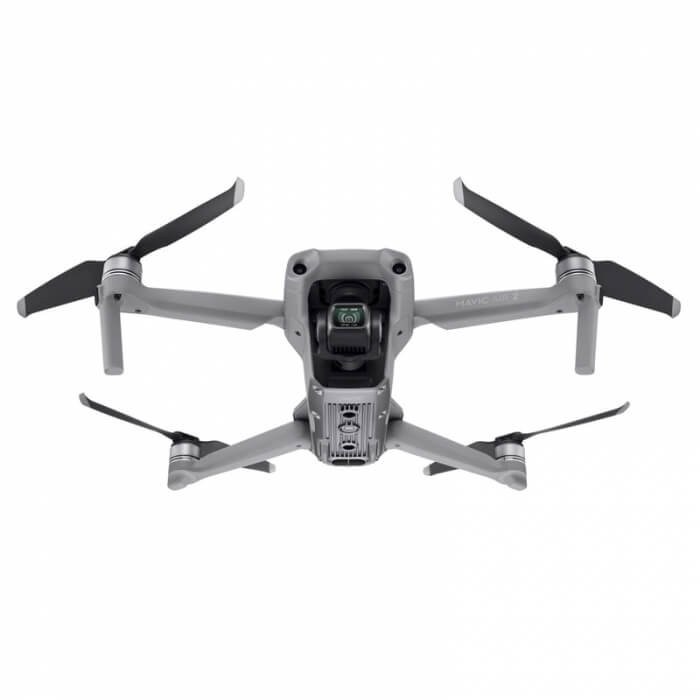The duodenum is a crucial part of your digestive system, playing a significant role in breaking down the food you eat. Like any other part of the body, the duodenum can experience various issues, especially in its muscular layer. This guide will walk you through everything you need to know about duodenum muscular layer diseases, including their anatomy, types, causes, symptoms, diagnostic tests, treatments, and more.
Anatomy of the Duodenum Muscular Layer
What is the Duodenum?
The duodenum is the first section of the small intestine, immediately following the stomach. It’s about 10-12 inches long and plays a key role in digesting food by mixing it with digestive juices from the pancreas and liver.
Muscular Layers of the Duodenum
The muscular layer of the duodenum is essential for its function. It consists of two main layers:
- Circular Muscle Layer: This layer encircles the duodenum and helps in the movement of food through rhythmic contractions called peristalsis.
- Longitudinal Muscle Layer: This layer runs along the length of the duodenum and aids in shortening and widening the intestine to move food along.
These muscular layers work together to ensure that food is properly mixed with digestive enzymes and moved efficiently through the digestive tract.
Types of Duodenum Muscular Layer Diseases
Duodenum muscular layer diseases affect the muscles responsible for moving food through the duodenum. Here are some common types:
- Duodenal Motility Disorders: Conditions where the movement of the duodenum muscles is abnormal.
- Duodenal Strictures: Narrowing of the duodenum due to scar tissue or inflammation.
- Duodenal Diverticula: Small pouches that form in the duodenum wall.
- Duodenal Hemangioma: Benign tumors made up of blood vessels in the duodenum.
- Duodenal Ulcers Affecting Muscular Layer: Ulcers that penetrate into the muscular layers.
Understanding these types helps in identifying and treating the specific issues affecting the duodenum’s muscular function.
Causes of Duodenum Muscular Layer Diseases
Several factors can lead to diseases affecting the muscular layer of the duodenum. Here are 20 possible causes:
- Chronic Inflammation: Ongoing inflammation can damage the muscular layers.
- Infections: Bacterial or viral infections can impair muscle function.
- Autoimmune Disorders: The body’s immune system attacks the duodenum muscles.
- Genetic Predisposition: Family history of digestive disorders.
- Trauma: Injury to the abdominal area affecting the duodenum.
- Surgical Complications: Post-surgery scarring or damage.
- Radiation Therapy: Treatment for cancer can damage tissues.
- Chemical Exposure: Ingestion of harmful substances.
- Nutritional Deficiencies: Lack of essential nutrients affecting muscle health.
- Chronic Diseases: Conditions like diabetes impacting muscle function.
- Medication Side Effects: Certain drugs can weaken duodenum muscles.
- Stress: Chronic stress affecting digestive health.
- Alcohol Abuse: Excessive drinking leading to tissue damage.
- Smoking: Tobacco use impairing blood flow and healing.
- Poor Diet: High-fat or low-fiber diets affecting digestive health.
- Obesity: Excess weight putting pressure on the digestive system.
- Age-Related Degeneration: Muscle weakening with age.
- Metabolic Disorders: Issues with body’s metabolism affecting muscles.
- Neurological Conditions: Nerve damage affecting muscle control.
- Hormonal Imbalances: Hormones regulating muscle function disrupted.
Identifying the underlying cause is crucial for effective treatment and management of duodenum muscular layer diseases.
Symptoms of Duodenum Muscular Layer Diseases
Recognizing the symptoms can lead to early diagnosis and better outcomes. Here are 20 common symptoms:
- Abdominal Pain: Persistent or recurring pain in the upper abdomen.
- Bloating: Feeling of fullness or swelling in the abdomen.
- Nausea: Feeling sick to the stomach.
- Vomiting: Throwing up food or bile.
- Indigestion: Discomfort or burning in the stomach after eating.
- Loss of Appetite: Reduced desire to eat.
- Weight Loss: Unintentional loss of body weight.
- Fatigue: Feeling unusually tired or weak.
- Heartburn: Burning sensation in the chest.
- Gastrointestinal Bleeding: Blood in vomit or stool.
- Difficulty Swallowing: Trouble moving food from mouth to stomach.
- Diarrhea: Frequent, loose stools.
- Constipation: Infrequent or difficult bowel movements.
- Anemia: Low red blood cell count causing weakness.
- Jaundice: Yellowing of the skin or eyes.
- Abdominal Distension: Enlargement of the abdomen.
- Change in Bowel Habits: Altered frequency or consistency of stools.
- Fever: Elevated body temperature indicating infection.
- Dark Urine: Urine appears darker than usual.
- Pain After Eating: Discomfort following meals.
If you experience any of these symptoms persistently, it’s essential to consult a healthcare professional for proper evaluation.
Diagnostic Tests for Duodenum Muscular Layer Diseases
Diagnosing duodenum muscular layer diseases involves various tests to identify the underlying issue. Here are 20 diagnostic methods:
- Physical Examination: Initial assessment by a doctor.
- Blood Tests: Checking for anemia, infections, or inflammation.
- Stool Tests: Detecting blood or infections in stool.
- Urinalysis: Checking for related urinary issues.
- Endoscopy: Inserting a camera to view the duodenum.
- Colonoscopy: Examining the large intestine.
- Upper GI Series: X-rays after swallowing a contrast material.
- CT Scan: Detailed imaging of the abdomen.
- MRI: Magnetic imaging for soft tissue detail.
- Ultrasound: Using sound waves to visualize internal organs.
- Manometry: Measuring muscle contractions in the duodenum.
- pH Monitoring: Assessing acidity levels in the digestive tract.
- Biopsy: Taking tissue samples for lab analysis.
- Capsule Endoscopy: Swallowing a camera pill to view the digestive tract.
- Barium Swallow: X-ray after drinking a barium solution.
- H. Pylori Test: Detecting bacterial infection.
- Abdominal X-Ray: Basic imaging for structural issues.
- PET Scan: Imaging to detect cancerous cells.
- Gastroparesis Test: Assessing stomach emptying.
- Electrogastrography: Recording electrical activity of the stomach muscles.
These tests help doctors determine the exact cause and extent of the disease, guiding effective treatment plans.
Non-Pharmacological Treatments
Managing duodenum muscular layer diseases often involves lifestyle changes and other non-drug treatments. Here are 30 non-pharmacological approaches:
- Diet Modification: Adopting a balanced, nutritious diet.
- High-Fiber Diet: Including fruits, vegetables, and whole grains.
- Low-Fat Diet: Reducing intake of fatty foods.
- Small, Frequent Meals: Eating smaller portions more often.
- Hydration: Drinking plenty of water daily.
- Avoiding Irritants: Steering clear of spicy or acidic foods.
- Stress Management: Practicing relaxation techniques like meditation.
- Regular Exercise: Engaging in physical activity to improve digestion.
- Weight Management: Maintaining a healthy weight.
- Smoking Cessation: Quitting smoking to improve digestive health.
- Limiting Alcohol: Reducing alcohol consumption.
- Chewing Food Thoroughly: Aiding digestion by chewing well.
- Elevating Head During Sleep: Preventing acid reflux.
- Probiotics: Consuming beneficial bacteria for gut health.
- Avoiding Late-Night Meals: Eating earlier to reduce digestive stress.
- Meal Planning: Organizing meals to ensure balanced nutrition.
- Cooking Methods: Opting for baking, steaming, or grilling over frying.
- Reducing Caffeine: Limiting coffee and other caffeinated beverages.
- Herbal Remedies: Using ginger or peppermint for digestive comfort.
- Biofeedback Therapy: Learning to control bodily functions.
- Acupuncture: Alternative therapy to relieve symptoms.
- Yoga: Improving flexibility and reducing stress.
- Tai Chi: Gentle exercise for overall well-being.
- Mindfulness Practices: Enhancing mental focus and relaxation.
- Avoiding Heavy Lifting After Meals: Preventing digestive strain.
- Using Heating Pads: Relieving abdominal pain.
- Maintaining a Food Diary: Tracking foods that trigger symptoms.
- Regular Medical Check-Ups: Monitoring health status.
- Educating Yourself: Understanding the disease for better management.
- Support Groups: Connecting with others facing similar issues.
Incorporating these strategies can significantly improve quality of life and manage symptoms effectively.
Drugs Used for Treatment
Medications can play a crucial role in managing duodenum muscular layer diseases. Here are 20 commonly used drugs:
- Proton Pump Inhibitors (PPIs): Reduce stomach acid (e.g., Omeprazole).
- H2 Receptor Antagonists: Decrease acid production (e.g., Ranitidine).
- Antacids: Neutralize stomach acid (e.g., Tums).
- Prokinetic Agents: Enhance muscle contractions (e.g., Metoclopramide).
- Antibiotics: Treat bacterial infections (e.g., Amoxicillin).
- Pain Relievers: Manage abdominal pain (e.g., Acetaminophen).
- Antispasmodics: Reduce muscle spasms (e.g., Hyoscyamine).
- Anti-inflammatory Drugs: Decrease inflammation (e.g., Ibuprofen).
- Biologics: Target specific immune responses (e.g., Infliximab).
- Corticosteroids: Reduce severe inflammation (e.g., Prednisone).
- Digestive Enzymes: Aid in food breakdown (e.g., Pancrelipase).
- Iron Supplements: Treat anemia (e.g., Ferrous Sulfate).
- Vitamin B12 Injections: Address deficiencies.
- Anti-Nausea Medications: Control nausea and vomiting (e.g., Ondansetron).
- Antidiarrheals: Manage diarrhea (e.g., Loperamide).
- Laxatives: Treat constipation (e.g., Psyllium).
- Muscle Relaxants: Ease muscle tension (e.g., Baclofen).
- Antifungals: Treat fungal infections if present.
- Immunosuppressants: Manage autoimmune conditions.
- Hormone Replacement Therapy: Address hormonal imbalances.
Always consult a healthcare provider before starting any medication to ensure it’s appropriate for your specific condition.
Surgeries for Duodenum Muscular Layer Diseases
In severe cases, surgery may be necessary to treat duodenum muscular layer diseases. Here are 10 surgical options:
- Duodenal Resection: Removing a damaged section of the duodenum.
- Strictureplasty: Widening narrowed areas without removing tissue.
- Diverticulectomy: Removing diverticula from the duodenum.
- Gastrectomy: Partial or total removal of the stomach.
- Gastrojejunostomy: Connecting the stomach to the jejunum to bypass the duodenum.
- Endoscopic Mucosal Resection: Removing abnormal tissues via endoscopy.
- Laparoscopic Surgery: Minimally invasive surgery using small incisions.
- Open Surgery: Traditional surgery with larger incisions for access.
- Sphincteroplasty: Repairing the sphincter muscles controlling the duodenum.
- Transplantation: In rare cases, organ transplantation may be considered.
Surgery is typically considered when other treatments haven’t been effective or when there’s significant damage that needs to be addressed directly.
Prevention of Duodenum Muscular Layer Diseases
Preventing duodenum muscular layer diseases involves maintaining overall digestive health and minimizing risk factors. Here are 10 prevention strategies:
- Balanced Diet: Eating a variety of nutritious foods.
- Regular Exercise: Keeping the digestive system active.
- Maintain Healthy Weight: Avoiding obesity to reduce pressure on the abdomen.
- Avoid Smoking: Reducing the risk of digestive tract damage.
- Limit Alcohol Intake: Protecting the digestive lining from irritation.
- Manage Stress: Using techniques like meditation to prevent digestive issues.
- Stay Hydrated: Drinking enough water to aid digestion.
- Regular Medical Check-Ups: Early detection of potential problems.
- Safe Food Practices: Avoiding contaminated or harmful foods.
- Medication Management: Using medications responsibly and under supervision.
Implementing these habits can significantly lower the risk of developing duodenum muscular layer diseases.
When to See a Doctor
Recognizing when to seek medical attention is vital for timely intervention. Here are scenarios when you should consult a doctor:
- Persistent Abdominal Pain: Ongoing discomfort in the upper abdomen.
- Unexplained Weight Loss: Losing weight without trying.
- Chronic Nausea or Vomiting: Frequent feeling of sickness or vomiting.
- Bleeding Symptoms: Blood in vomit or stool.
- Severe Bloating: Extreme swelling or fullness in the abdomen.
- Difficulty Swallowing: Trouble moving food from mouth to stomach.
- Persistent Indigestion: Ongoing discomfort after eating.
- Anemia Symptoms: Feeling weak, tired, or dizzy due to low blood count.
- Jaundice: Yellowing of the skin or eyes.
- Changes in Bowel Habits: Significant alterations in stool frequency or consistency.
Early consultation can lead to better management and prevent complications.
Frequently Asked Questions
1. What is the main function of the duodenum’s muscular layer?
The muscular layer helps move food through the duodenum by contracting and relaxing in a coordinated manner, ensuring proper mixing with digestive juices.
2. Can duodenum muscular layer diseases be cured?
Many duodenum muscular layer diseases can be managed effectively with the right treatment. Some conditions may require long-term management, while others can be cured.
3. Are there any lifestyle changes that can help manage these diseases?
Yes, adopting a balanced diet, regular exercise, stress management, and avoiding smoking and excessive alcohol can significantly help manage symptoms.
4. How is a duodenal stricture treated?
Treatment may involve medications to reduce inflammation, endoscopic procedures to widen the narrowed area, or surgery in severe cases.
5. What role do probiotics play in managing duodenum diseases?
Probiotics help maintain a healthy balance of gut bacteria, which can improve digestion and reduce symptoms like bloating and discomfort.
6. Is surgery always necessary for duodenum muscular layer diseases?
No, surgery is usually considered when other treatments haven’t been effective or when there’s significant damage that needs direct intervention.
7. Can stress affect the duodenum’s muscular layer?
Yes, chronic stress can impact digestive health, leading to issues like muscle spasms and impaired motility in the duodenum.
8. What are the risks of untreated duodenum muscular layer diseases?
Ignoring these diseases can lead to complications like malnutrition, severe pain, bleeding, and even life-threatening conditions.
9. How long does recovery take after surgery for duodenal issues?
Recovery time varies depending on the type of surgery, but it generally ranges from a few weeks to several months.
10. Can children develop duodenum muscular layer diseases?
Yes, while less common, children can also develop these conditions, often due to congenital issues or infections.
Conclusion
Duodenum muscular layer diseases can significantly impact your digestive health and overall well-being. Understanding the anatomy, causes, symptoms, and available treatments empowers you to take proactive steps in managing and preventing these conditions. Always consult with healthcare professionals if you experience any concerning symptoms to ensure timely and effective care.
Disclaimer: Each person’s journey is unique, treatment plan, life style, food habit, hormonal condition, immune system, chronic disease condition, geological location, weather and previous medical history is also unique. So always seek the best advice from a qualified medical professional or health care provider before trying any treatments to ensure to find out the best plan for you. This guide is for general information and educational purposes only. Regular check-ups and awareness can help to manage and prevent complications associated with these diseases conditions. If you or someone are suffering from this disease condition bookmark this website or share with someone who might find it useful! Boost your knowledge and stay ahead in your health journey. We always try to ensure that the content is regularly updated to reflect the latest medical research and treatment options. Thank you for giving your valuable time to read the article.
















